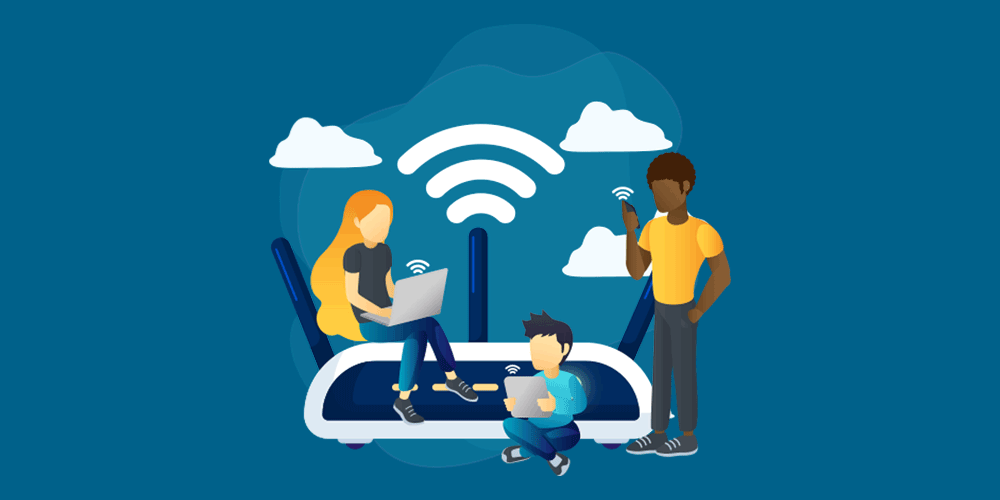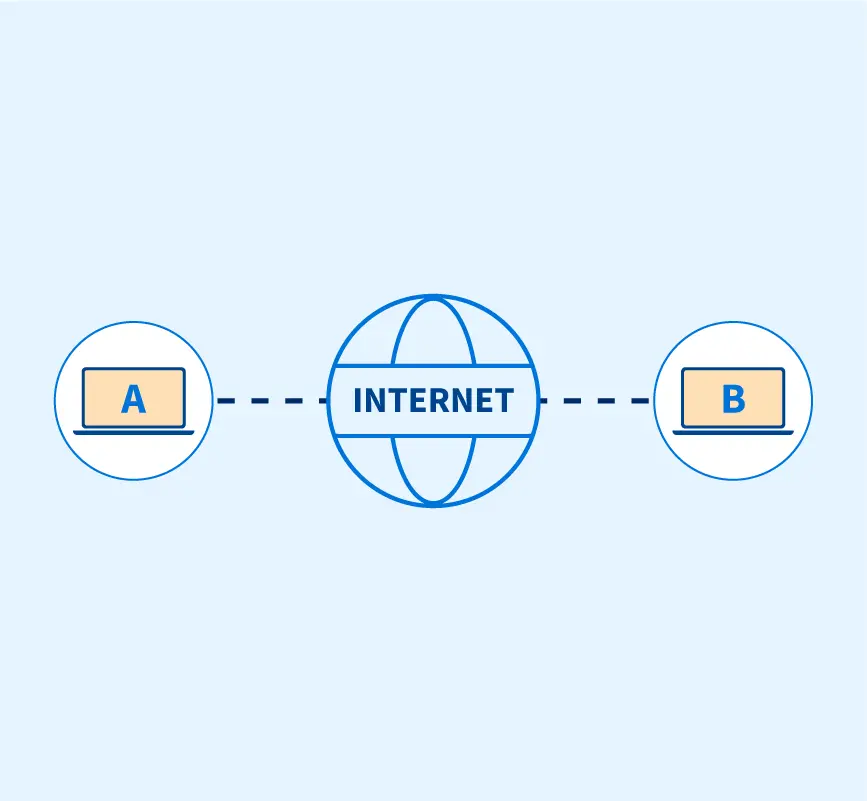An In-Depth Exploration of How the Internet Works
 Nehal Ingole
Nehal Ingole
Introduction
The internet stands as a pinnacle of human achievement, revolutionizing the way we communicate, collaborate, and access information. However, beneath its seemingly seamless facade lies a complex labyrinth of interconnected systems and protocols. In this comprehensive guide, we embark on a journey to demystify the inner workings of the internet, shedding light on its infrastructure, protocols, and mechanisms that power the digital realm.
Understanding the Basics
At its core, the internet is a vast network comprising billions of interconnected devices, ranging from personal computers to sophisticated servers and routers. These devices communicate through a standardized set of rules and protocols, most notably TCP/IP (Transmission Control Protocol/Internet Protocol), which governs data transmission and routing across the network.
Consider a simple web browsing session: When you type a website's address into your browser and hit enter, your device initiates a series of interactions that ultimately retrieve the desired web page. This process involves multiple steps, including DNS (Domain Name System) resolution, where human-readable domain names (like www.example.com) are translated into numerical IP addresses (such as 192.0.2.1), and routing through various network devices to reach the destination server.

The Role of ISPs
Internet Service Providers (ISPs) serve as the gateway to the internet for millions of users worldwide. These entities provide access to the internet through various technologies such as Digital Subscriber Line (DSL), cable, fiber optics, and wireless connections. Once connected, ISPs manage the flow of data between different networks, ensuring efficient routing and delivery of information.
Anatomy of a Connection
Let's delve deeper into the anatomy of a connection by examining the journey of an email. Suppose you compose an email and hit send. Your device packages the email into data packets and sends them to your ISP's servers. From there, the packets traverse a network of routers, switches, and other network devices, each making routing decisions based on destination addresses. Eventually, the packets reach the recipient's ISP and are delivered to the recipient's device, completing the transmission.
Protocols and Standards
The internet relies on a plethora of protocols and standards to facilitate communication and data exchange. For instance, HTTP (Hypertext Transfer Protocol) enables the transfer of web pages and other content between servers and clients. SMTP (Simple Mail Transfer Protocol), on the other hand, handles the transmission of emails between mail servers.
Consider the example of browsing a website: When you enter a URL into your browser, it sends an HTTP request to the server hosting the website. The server responds with an HTTP response containing the requested web page, which your browser then renders for display.
Data Centers and Content Delivery Networks (CDNs)
Behind every website and online service are data centers housing an array of servers and storage systems. These data centers store and serve the vast amounts of data that power the internet. Content Delivery Networks (CDNs) further optimize the delivery of content by caching data at strategically distributed locations worldwide. For instance, when you access a popular website, the content may be served from a nearby CDN server rather than the origin server, reducing latency and improving performance.
Ensuring Security
In an era marked by rampant cybersecurity threats, ensuring the security of online communications is paramount. Encryption technologies such as SSL/TLS (Secure Sockets Layer/Transport Layer Security) play a crucial role in safeguarding sensitive data from interception and tampering. For example, when you visit a website with HTTPS in the URL, your browser establishes a secure connection with the server using SSL/TLS encryption, protecting your data from prying eyes.
The Future of the Internet
As technology continues to evolve at a breakneck pace, so too does the internet. Emerging trends like IPv6 adoption, 5G connectivity, and the Internet of Things (IoT) are poised to reshape the digital landscape in profound ways. Consider the potential impact of IoT devices: From smart home appliances to industrial sensors, these interconnected devices hold the promise of ushering in a new era of connectivity and convenience.
Moreover, innovations in artificial intelligence, edge computing, and blockchain technology are poised to further transform the internet ecosystem, opening up new possibilities for communication, commerce, and collaboration.
Conclusion
The internet stands as a testament to human ingenuity, connecting people and information across the globe in ways once thought unimaginable. By delving into the intricacies of its infrastructure, protocols, and mechanisms, we gain a deeper appreciation for the marvel that is the internet. As we look to the future, it's clear that the internet will continue to evolve, driving progress and connectivity on a global scale. So let's embrace this ever-changing digital frontier and harness its boundless potential for the betterment of humanity.
Connect with us:
Hashnode: https://hashnode.com/@Nehal71
Twitter : https://twitter.com/IngoleNehal
Subscribe to my newsletter
Read articles from Nehal Ingole directly inside your inbox. Subscribe to the newsletter, and don't miss out.
Written by

Nehal Ingole
Nehal Ingole
🚀 Greetings World! 🌐 Meet a dynamic Frontend Developer, UI/UX Designer, and avid explorer of Cloud & DevOps realms! Uncover the journey of a professional deeply passionate about crafting seamless user experiences, designing visually stunning interfaces, and navigating the cloud with a DevOps mindset. 🔧 Skills Snapshot: Frontend Mastery: HTML, CSS, and JavaScript expert, specializing in React, Angular, and Vue.js. Design Wizardry: Proficient in wireframing, prototyping, and Adobe Creative Suite and Figma for captivating designs. Cloud Maestro: Fluent in AWS, Azure, and Google Cloud Platform, adept at architecting scalable solutions. DevOps Guru: Skilled in Docker, Kubernetes, Jenkins, and Git, contributing to efficient development workflows. 🔗 Let's Connect: Open to collaborating on exciting projects and sharing industry insights, I invite connections for networking or discussions. Reach out for potential collaborations. 📧 Contact Me: GitHub: GitHub Profile Email: nehalingole2001@gmail.com Mobile: 7397966719 Figma: Figma Profile Twitter: Twitter Profile HashNode: HashNode Profile LinkedIn : LinkedIn Profile